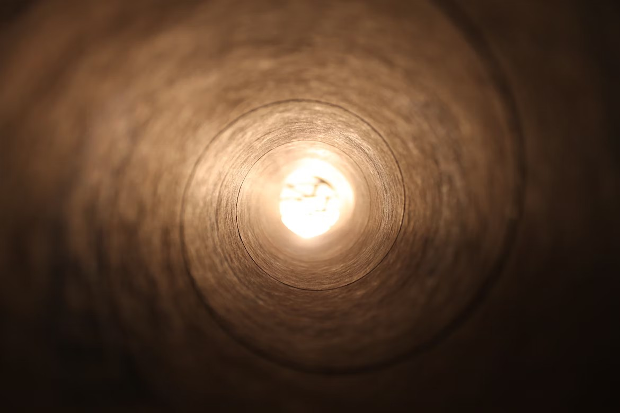Sensors deployed down boreholes offer a glimpse into Earth's subsurface properties. This article presents the first step towards a new generation of borehole deployable quantum gravity sensors based on cold atoms. Sensors, which once developed, have the potential to reveal Earth's hidden depths with unparalleled precision.
Delving deep into Earth to extract information is crucial for various industries. Whether it is for oil and gas prospecting, mineral exploration, or monitoring carbon capture and storage, boreholes constitute gateways to underground secrets. To navigate these intricate labyrinths, we need advanced sensing technologies. During the construction and operating lifetime of a borehole, different sensors will be lowered to obtain information about the borehole and the surrounding geology.
Among these are gravity sensors, which can map the density of the surrounding geology. Unlike methods such as ground penetrating radar or nuclear logging, gravity sensors offer an edge: gravity is not weakened by intervening materials, such as the borehole's casing. This allows them to detect features at greater distances. Moreover, gravity sensing avoids the use of radioactive isotopes, eliminating related health and security concerns.
Despite the advantages of borehole gravity sensing, a significant limitation is the need for extended time periods to perform measurements, compared to other remote sensing techniques. This prolonged duration stems from the need to average out vibrations, which, according to the laws of physics, are indistinguishable from gravity. Such vibrations can be due to natural seismic activities or human actions such as road traffic and construction. The only workaround is to measure over longer periods and average the results. This limitation of traditional borehole gravity sensors might be overcome with the advent of quantum sensors based on cold atoms.
These quantum sensors are called atom interferometers. They employ lasers as precise rulers and falling atoms as perfect test masses. Millimetre-sized clouds of millions of atoms are trapped and cooled to a fraction of a degree above absolute zero. The atoms are dropped, and precisely-timed laser pulses place them into quantum superposition states travelling separate paths before causing the atoms to interfere. The resulting interference pattern offers precise information about gravity.
With two atom interferometers, vertically separated by some distance, it is possible to measure the gravity gradient - the variation of gravity with depth. By simultaneously measuring with both atom interferometers using the same lasers, the effects of vibrations are cancelled out. This means atom interferometry-based gravity gradiometers can operate more efficiently in vibrationally noisy areas where classical gravity sensors struggle.
Yet, the very nature of boreholes brings forth a unique challenge: their depth, narrowness, and harsh environmental conditions entail a far cry from the typical environments where quantum sensors have so far demonstrated their potential. To be lowered down these deep, narrow holes, they need to be both compact and robust against the physical conditions they encounter.
Researchers from the University of Birmingham and Fraunhofer UK have teamed up to address these challenges, creating the first compact cold atoms source capable of operating in a borehole. This source of atoms, a magneto-optical trap or MOT, uses a combination of lasers and magnetic fields to cool and trap the atom clouds that would be required in atom interferometry. The package was deployed in a 50 m deep borehole of diameter 14 cm, full with water to near the ground level. The system proved to be robust during the trial deployment, producing atom clouds of about 3 million rubidium atoms.
This marks the first significant step towards deploying quantum technology in boreholes for gravity sensing. As with every pioneering technology, there are further steps ahead. To transition this from a prototype to a full-fledged, borehole-ready quantum sensor, certain refinements and enhancements are required. Once realised, quantum gravity sensors could one day become the gold standard for borehole surveying, revealing the Earth's hidden depths with unparalleled precision.
Original Article:
Vovrosh J, Wilkinson K, Hedges S, McGovern K, Hayati F, Carson C, et al. (2023) Magneto-optical trapping in a near-surface borehole. PLoS ONE 18(7): e0288353. https://doi.org/10.1371/journal.pone.0288353
 Maths, Physics & Chemistry
Maths, Physics & Chemistry



